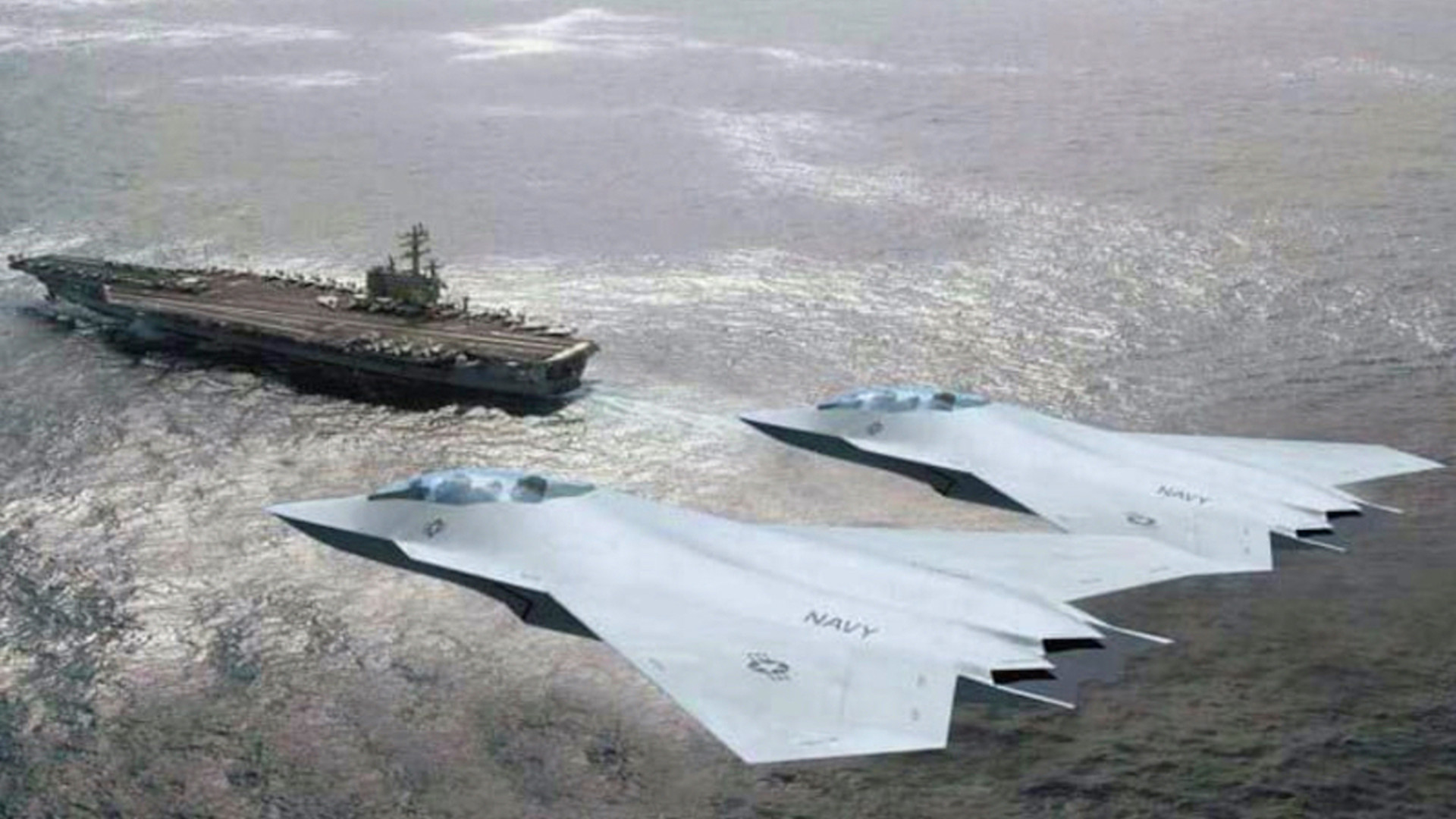The U.S. Navy plans to request more than $9 billion in funding for its Next Generation Fighter aircraft, or F/A-XX, over the next five fiscal years. This, together with other details from the service’s latest budget request for the 2024 Fiscal Year, may point to possible plans to acquire prototypes of its next-generation stealth combat jet design, or at least get closer to doing so, before the end of the decade. Of course, it’s very possible that early developmental demonstrator test articles have already flown.
The Navy has now released more detailed budget documents that outline its spending plans for the F/A-XX effort between Fiscal Years 2024 and 2028. The service had previously announced that its latest proposed budget includes a request for nearly $1.53 billion in funding for this program.
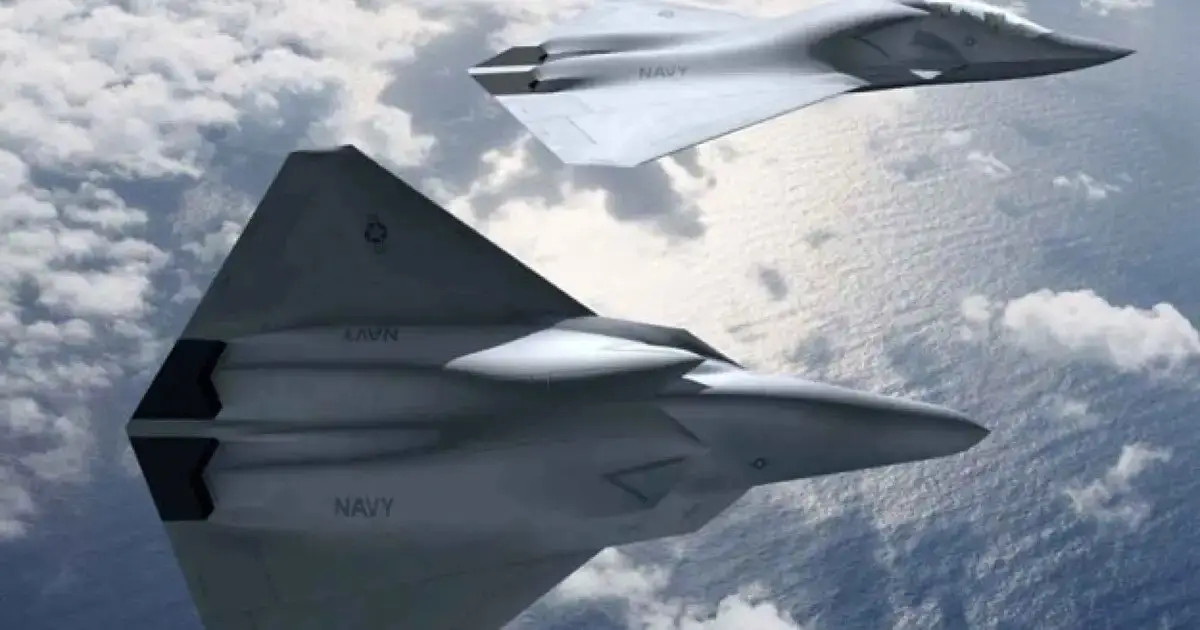
The full current proposed budget outlay for F/A-XX for the next five years is as follows:
- Fiscal Year 2024: $1.528 billion
- Fiscal Year 2025: $2.205 billion
- Fiscal Year 2026: $2.634 billion
- Fiscal Year 2027: $2.682 billion
- Fiscal Year 2028: $2.735 billion
These figures add up to just over $9.104 billion. To put the size of this number in perspective, the Navy is looking to secure around $11.849 billion between Fiscal Year 2024 and Fiscal Year 2028 to pay for 90 F-35C Joint Strike Fighters.
Historically, advanced stealth aircraft programs have been very expensive. For example, the final estimated total research and development cost for the U.S. Air Force’s F-22 Raptor was approximately $32.4 billion in 2010 dollars, or nearly $45 billion in today’s dollars, adjusted for inflation. The F-22’s Engineering and Manufacturing Development (EMD) phase also ran from August 1991 until December 2005.
The Air Force also is asking for just over $1.9 billion for elements of its own Next Generation Air Dominance (NGAD) program in Fiscal Year 2024, which includes work on a sixth-generation stealth combat jet, among other things.
“The details of this budget justification are classified, per Executive Order 13526, Sec 1.4 (a) and are submitted annually to Congress in the classified budget justification book,” is all the Navy’s budget documents have to say about what the requested F/A-XX funding in Fiscal Year 2024 would be used for specifically.
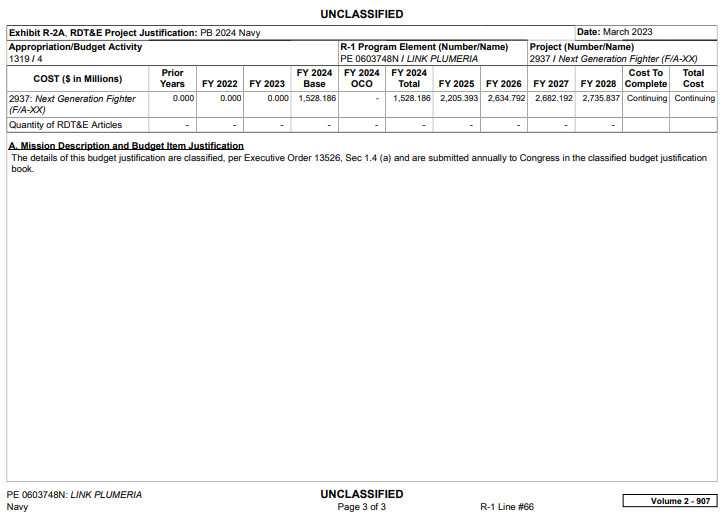
The service has released information in the past that says the combat jet, expected to be a sixth-generation stealth design, will be a replacement for at least a portion of its existing F/A-18E/F Super Hornets and be capable of being used as a “quarterback” to control groups of advanced drones. You can read more about what we know so far about the Navy’s plans for its Next Generation Fighter here.
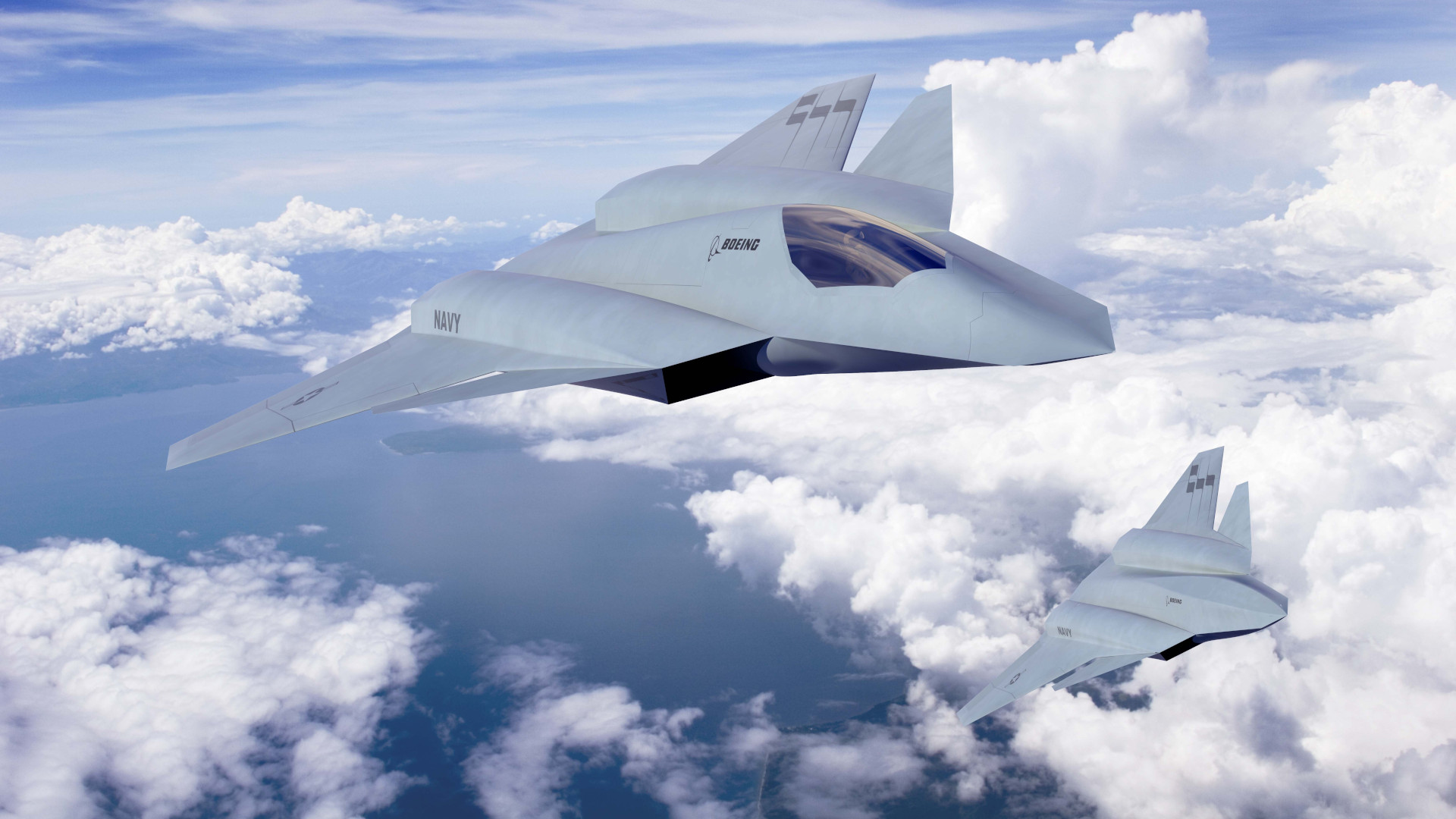
Though granular details about F/A-XX remain scant, in The War Zone‘s initial reporting on aviation-related developments in the Navy’s proposed Fiscal Year 2024 budget, we highlighted how the value of the request for this program in this fiscal cycle was already notable. The Next Generation Fighter line item alone represents five percent of all of the research and developing funding – $26.9 billion in total – that the service is asking for in the next fiscal cycle.
The fact that the Navy is looking to further increase its annual budget for F/A-XX to over $2 billion in Fiscal Year 2025, and keep it above that level with some growth for the next three fiscal years, is also significant.
Despite how classified F/A-XX is, the Navy’s more detailed budget documents do still provide some interesting, if small additional details about the program. For one, the line item is contained within a section of funds set aside for what is described as “Advanced Component Development & Prototypes.”
Within that section, F/A-XX is also found inside a specific element that has previously only contained a long-standing, top-secret Special Access Program (SAP) nicknamed Link Plumeria. SAPs feature additional, heavily compartmentalized layers of security to protect the disclosure of information deemed to be particularly sensitive to national security, as you can learn more about here.
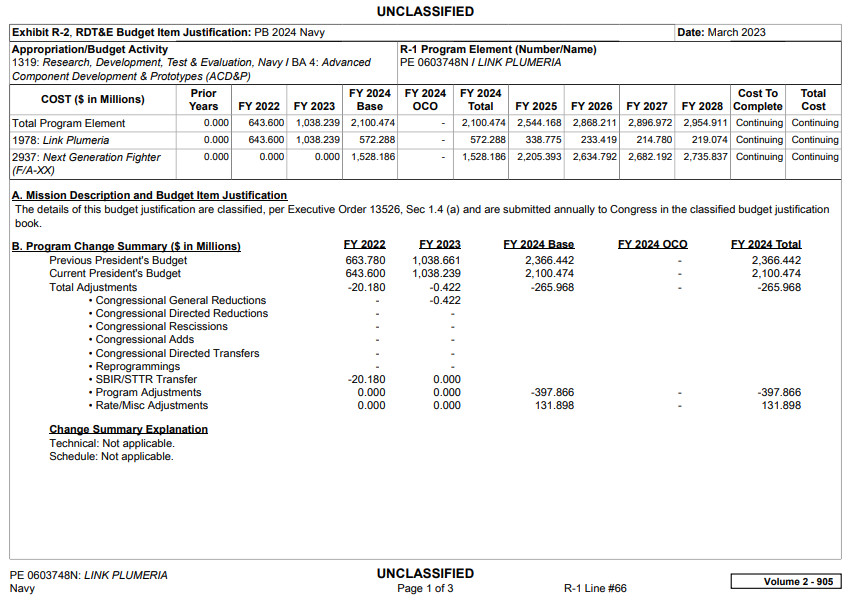
Details about Link Plumeria are extremely limited, but some sources suggest it could be a research and development effort with a “tactical” focus.
How closely Link Plumeria is or isn’t tied to F/A-XX is unknown. However, the budget documents do say that the Navy’s received around $1.038 billion for Link Plumeria in Fiscal Year 2023, but is only asking for some $572 million in Fiscal Year 2024. The service expects to further trim its requests for funding for Link Plumeria between Fiscal Years 2025 and 2028, all while F/A-XX is ramping up.
That the development of an advanced stealth aircraft, or components thereof, would be contained inside a SAP is hardly unusual. At the same time, it is worth noting that Link Plumeria funds have been used indirectly to support advanced naval aviation projects in the past that are not necessarily directly related to the specific work going on within that SAP.
In the 2014 Fiscal Year, the Navy reallocated funds from Link Plumeria, as well as two other SAPs, Retract Elm and Retract Maple, and the Joint Primary Aircraft Trainer System (JPATS) program, to help pay for ongoing flight testing of two X-47B drones under what was then known as the Navy Unmanned Combat Air System-Demonstrator (NUCAS-D) program. As seen below, the service said it was possible to shift money out of the Link Plumeria account at the time simply because the “funds are available to support higher priority requirements.”

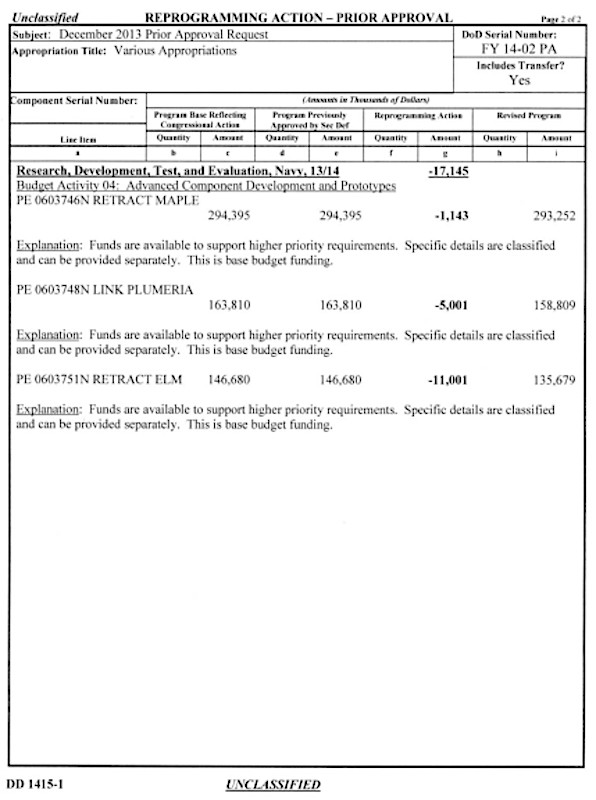
NUCAS-D led to the Unmanned Carrier-Launched Airborne Surveillance and Strike (UCLASS) program, which was subsequently canceled in favor of the development of a carried-based tanker drone with a secondary intelligence, surveillance, and reconnaissance (ISR) capability. That effort has since evolved into the MQ-25A Stingray program.
Link Plumeria and its projected funding could, of course, be entirely unrelated to F/A-XX and the two may have been placed together in the budget for some other reason. We just don’t know at this time.
Otherwise, information about the Navy’s requirements for F/A-XX and what stage of development the program might be in currently remain shrouded in secrecy. In September 2022, Aviation Week reported that the project reached a “concept refinement” phrase.
F/A-XX is also known to be a component of a broader Next Generation Air Dominance (NGAD) initiative within the Navy, which should not be confused with the Air Force’s program of the same name. That being said, the Air Force has made clear that they are intertwined to a significant degree. With all this in mind, additional funding for F/A-XX, or for related projects, such as the advanced drones that these jets are expected to work closely with, could come through other portions of the budget, including other classified elements.
Regardless, the projected funding levels that the Navy has disclosed so far for F/A-XX would seem to point to a program in transition, if it hasn’t already reached a new phase of development. The fact that the line item is contained in a section that is described as having to do with actual “prototypes,” at least in part, can only raise questions about whether the service is looking to acquire physical examples, or pre-production test articles of some kind, in the coming years, again, if it hasn’t done so already.
This would all line up to a degree with what has been said publicly to date about the Air Force’s timeline for its own crewed NGAD combat jet. Secretary of the Air Force Frank Kendall has said in the past that the hope is that the first of those aircraft might begin to enter service before 2030.
No matter what, the documents accompanying the Navy’s 2024 Fiscal Year budget proposal only further underscore how important the service views F/A-XX as a future modernization priority.
Contact the author: joe@thedrive.com
